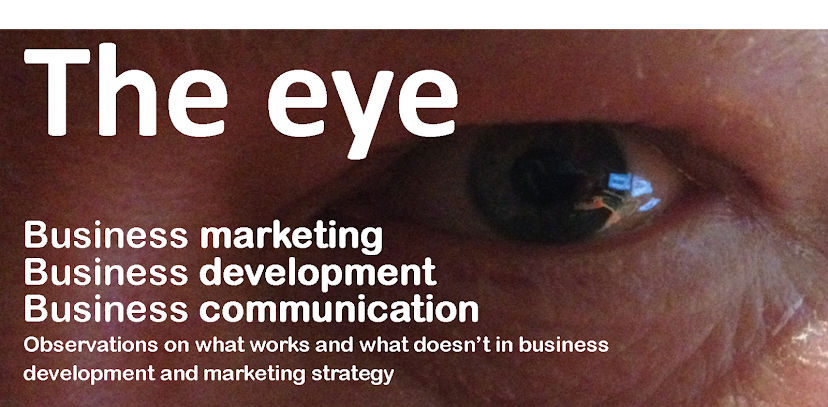A lot of professional
service businesses have been through a rough period in recent years. Talk of a
much needed economic upturn in 2014 is helping to raise spirits. But just
relying on an upturn to translate into more work for your business is a bad
idea. Here’s why.
The cycles should be familiar to all of us who have lived
through them before. In good times, work finds you, staff numbers expand and
the phones keep ringing. Then comes the downturn. The phone doesn’t ring as
often. Work contracts to a few long term clients and staff numbers are trimmed.
Then the upturn comes again but in every upturn, there are
new faces and new businesses which seem to be getting the lion’s share of work.
It’s as if they appeared from nowhere, or were once fledgling companies
regarded at best as junior rivals, now ‘stealing’ all the best opportunities
from under your nose. How does this happen?
In a word, complacency. If you are a business which is
hoping to ride a coming wave of economic revitalisation and to resume your
pre-downturn glory, you’re guilty of complacency. While you are waiting, others
are already busy: building the reputations, forging the relationships, making
the overtures. They’ll be talking to ‘your’ clients and actively beavering away
on their B2B activities. They’ll be communicating often, networking, and
spending time on the phone. They’ll make sure they’re on the radar of every
potential client… including yours.
When the upturn comes, it’s these companies who will be the
first to benefit. During any downturn, people move around, leadership roles
change, and ‘old’ relationships are tested with new blood. Active businesses
with an intuitive or disciplined approach to their B2B marketing know this, and
are always on top of change, in preparation for what comes next. Complacent
businesses are the first to discover that old networks are no longer as
reliable, and even that awareness of their business offering has dropped off
the radar.
So how do you prevent this?
First, start now and don’t wait for the upturn. You should
be investing time and resources into building your contact lists and refreshing
old lists. If you haven’t used your client database for some time, you might be
shocked at how many people have moved or left old positions. You need to find where
they have gone and get in touch with them and re-established the
relationship. At the same time, work out
who’s replaced them from where they left and keep that B2B relationship alive.
You ought also to spend some time thinking strategically
about which sectors of your market will move first in any upturn. Target them.
Identify the companies that will need your services and identify the key
influencers within those companies who need to be aware of your existence.
Does your collateral reflect your strategic aim? Is it time
to refresh the website and those company brochures? Is it time to run a quick
survey to understand how your target market perceives you, your strengths and
competitive weaknesses?
You need to be communicating regularly. Once a month is not
overkill, it’s minimalist. It doesn’t matter if your outreach is a mix of
electronic, print, and personal contact – just make sure you have diarised this
as a discipline and have a plan for regular client outreach and communication.
If you’re not a natural networker, find someone in your
business who is. Make the commitment to have some sort of presence at various
industry events likely to attract the sort of clients you’re interested in
keeping, and those you’re interested in winning. There is no point having a box
of 200 business cards in your desk drawer. They belong in other peoples’ hands
so find a way to make that happen.
You will need to do all these things and more because enough
of your competitors will be. They’ll be the ones picking up the work you
expected to be ‘rightfully’ yours. Complacency is a common human character
trait and we all suffer it. The way to counter it is through building a
discipline around your B2B efforts.
Failing to do anything much other than hope to be carried
along by a coming economic upturn isn’t as good a plan as getting underway now
and making your own luck for the New Year.








